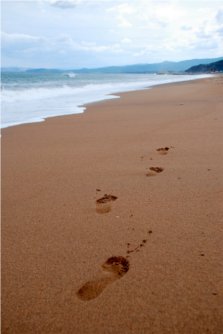Ingles
8-clases
11-Reading an d listning
8-clases
11-Reading an d listning
Italiano
Italiano

Assistant: Can I help you?
Customer: Yes, please. I'm looking for a skirt.
Assistant: Here you are.
Customer: Oh, I like it. And I'm also looking for a blouse.
Assistant: What colour?
Customer: Blue, please.
Assistant: Certainly. And what size?
Customer: Small, please.
Assistant: I'm sorry, but these blouses don't come in small. I can offer you in medium.
Customer: OK. Can I try it on?
Assistant: Sure! Follow me.
Customer: Yes, please. I'm looking for a skirt.
Assistant: Here you are.
Customer: Oh, I like it. And I'm also looking for a blouse.
Assistant: What colour?
Customer: Blue, please.
Assistant: Certainly. And what size?
Customer: Small, please.
Assistant: I'm sorry, but these blouses don't come in small. I can offer you in medium.
Customer: OK. Can I try it on?
Assistant: Sure! Follow me.
Language Focus
| assistant | vendedor/a |
| customer | cliente |
| Can I help you? | ¿Lo puedo ayudar? |
| I'm looking for | Estoy buscando |
| skirt | pollera |
| Here you are | Aquí tiene |
| also | también |
| blouse | blusa |
| What colour? | ¿En qué color? |
| What size? | ¿En qué talle? |
| small | talle pequeño |
| I'm sorry | Lo siento |
| don't come | no vienen |
| I can offer you | Le puedo ofrecer |
| in medium | en talle mediano |
| Can I try it on? | Me la puedo probar? |
| Sure! | ¡Claro!, ¡Por supuesto! |
| Follow me | Sígame http://www.saberingles.com.ar/curso/lesson09/02.html |
Part 3. NEW WORDS AND EXPRESSIONS
That skirt is very nice.Aquella pollera es muy bonita.
This tie matches the trousers.Esta corbata combina con los pantalones.
That sweater fits you.Ese suéter te queda bien de tamaño.
That sweater suits you.Ese suéter te queda bien.
I'm wearing a new dress.Llevo puesto un vestido nuevo.
This tie matches the trousers.Esta corbata combina con los pantalones.
That sweater fits you.Ese suéter te queda bien de tamaño.
That sweater suits you.Ese suéter te queda bien.
I'm wearing a new dress.Llevo puesto un vestido nuevo.
 | He's wearing a shirt, a tie, a suit and a hat. Tiene puesto una camisa, una corbata, un traje y un sombrero. |
 | She's wearing a white skirt, a green blouse and a pair of running shoes. Tiene puesto una pollera blanca, una blusa verde y un par de zapatillas. |
 | She's wearing a light blue dress, white socks and shoes. Tiene puesto un vestido celeste, medias blancas y zapatos. |
 | He's wearing a red t-shirt and a pair of blue trousers. Tiene puesto una remera roja y un par de pantalones azules. |
Part 3. NEW WORDS AND EXPRESSIONS
 |  |  |
| t-shirt | sweater | shirt |
 |  | |
| skirt | dress | trousers |
 |  | |
| coat | tie | scarf |
 |  | |
| shoes | hat | jacket |
| socks | gloves | belt |
A: I bought you a pair of pants.
B: Thank you.
A: I hope they fit.
B: I hope you kept the receipt.
A: You think they won't fit?
B: I think I've put on some weight.
A: You think?
B: Maybe a pound or two.
A: Maybe four or five pounds?
B: My waist is bigger than it was.
A: No problem. These pants have an elastic waistband.
B: You are so smart!
| Clothing - Continued |

|
https://www.blogger.com/blogger.g?blogID=5909932142678363730#editor/target=post;postID=2130613958230671451
| Fashion |

 
|
Teaching Speaking
http://www.nclrc.org/essentials/index.htm http://www.nclrc.org/essentials/index.htm
Many language learners regard speaking ability as the measure of knowing a language. These learners define fluency as the ability to converse with others, much more than the ability to read, write, or comprehend oral language. They regard speaking as the most important skill they can acquire, and they assess their progress in terms of their accomplishments in spoken communication.
Language learners need to recognize that speaking involves three areas of knowledge:
- Mechanics (pronunciation, grammar, and vocabulary): Using the right words in the right order with the correct pronunciation
- Functions (transaction and interaction): Knowing when clarity of message is essential (transaction/information exchange) and when precise understanding is not required (interaction/relationship building)
- Social and cultural rules and norms (turn-taking, rate of speech, length of pauses between speakers, relative roles of participants): Understanding how to take into account who is speaking to whom, in what circumstances, about what, and for what reason.
In the communicative model of language teaching, instructors help their students develop this body of knowledge by providing authentic practice that prepares students for real-life communication situations. They help their students develop the ability to produce grammatically correct, logically connected sentences that are appropriate to specific contexts, and to do so using acceptable (that is, comprehensible) pronunciation.
Section Contents
Material for this section was drawn from “Spoken language: What it is and how to teach it” by Grace Stovall Burkart, in Modules for the professional preparation of teaching assistants in foreign languages (Grace Stovall Burkart, ed.; Washington, DC: Center for Applied Linguistics, 1998)




